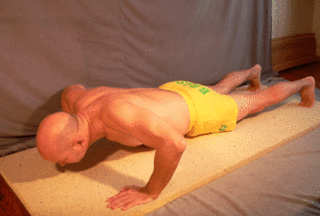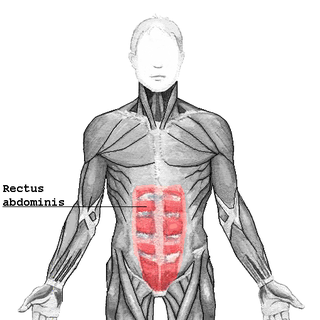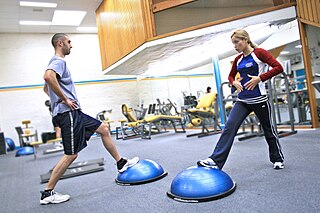Abdominal exercises

There are multiple ways to work on our abdominals but here are various abdominal exercises someone can do that are effective.
One of the most popular exercise is what is known as the abdominal crunch. It activates the four abdominal muscles because it flexes the spine while laying down with their feet on the ground while raising their upper body up and then back down. For those who are new to this exercise, it can help perform this exercise by crossing their arms and putting them crossed on their chest. Another effective exercise is an abdominal plank because it is used when strengthening their trunk and their inner and outer oblique of their core. This exercise is performed by being facedown, legs straight with their elbows bent, and holding the exercise in place by putting their weight on their forearms. [9]
Moving forward, another exercise people can begin doing is to lie on their back and putting their feet at a 45° angle while moving their legs as if they were riding a bicycle. In addition, people can lay down with their hands on their side of their body and position a book on their stomach while raising their stomach up and down to feel the burn in their core. People may also lay down and position their feet at a 45° angle and lift them straight and bend them back down to the 45° angle then repeat. Once people have completed those they can stand straight with both of their arms opened and straight and bend down to the left then to the right by using one hand at a time. While standing people can also stand straight and position their hands on their hips and rotate their bodies from right to left and vice versa while bending forward and backward. Another way someone can work on their abdominals is by sitting on top of their legs in a bed while bending their chest forward until it touches the bed then coming back up to their normal position. Also, people can sit down on a bed with their legs straight and they will lie back and come back up without using their hands. While using a chair they can place their arms on the side of a chair and with their legs backward they will push down until their abdominal touches the chair. Finally, people can lay down with their feet straight and raise their legs to a right angle and then back down. For a better visual understanding, all these exercises were obtained from an Abdominal Exercise Journal. [10]
Momentaneous activity
One way to estimate the effectiveness of any abdominal exercise is in measuring the momentaneous[ jargon ] activity by electromyography (EMG), with the activity generally being compared to that of the traditional crunch. However, an exercise of lower activity performed during a long time can give at least as much exercise as a high-activity exercise, with the main difference being that a prolonged duration results in more in aerobic exercise than strength training.
The following tables rank abdominal exercises from highest to lowest in terms of activity as determined by the EMG measures: [11]
|
|
1Compared to traditional crunch (100%)
Bicycle crunch
The bicycle targets the rectus abdominals and the obliques. Also, the rectus abdominals can be worked out with the basic crunch, the vertical crunch, the reverse crunch, and the full vertical crunch, and when at a low enough body fat percentage (10-12% for males, 15-18% for females) the individual parts of the muscle become visible; many refer to this visible separation as a six-pack. By exercising the internal and external obliques the stomach can be flattened. [12] The long arm crunch, in which arms are straightened behind, adds a longer lever to the move and emphasizes the upper part of the abs. The plank exercise not only strengthens the abs but also the back and stabilizes the muscles. [13]
Gadgets
Abdominal exercises can also be performed with the help of some machines and the captain's chair is one of the most popular machines used in gyms and health clubs. Other machines are the Ab Roller, the Ab Rocket Twister, the Chin-up bar in conjunction with Ab Straps, and the Torso Track. An exercise ball is also a tool that helps strengthen the abs. It may be more effective than the crunches on the floor because the abs do more work as the legs are not involved in the exercise. [14] With respect to the Ab-Slide, the study performed by Bird et al. showed greater muscle activation in the upper rectus abdominis, lower rectus abdominis, and external oblique when compared to the standard abdominal crunch. The Ab-Slide has proven to be an effective tool in strengthening the abdominal muscles from a concentric muscle action perspective. However, this research does not support replacing the traditional crunch exercise with the Ab-Slide gadget due to the lack of proven effectiveness in the eccentric loading of the abdominal muscles and the greater postural control. [15] [16] Potentially the most effective equipment for abdominal strengthening is those that offer the least stability. Examples include the CoreFitnessRoller, bodyweight suspension training such as TRX, and stability balls with or without the Halo.














